Research piece by Alisa Demchenko
Misan Harriman (b. 1977)
Misan Harriman is a British Nigerian artist who was born in 1966. He is the son of Chief Hope Harriman, a highly successful businessman, politician, and philanthropist once described as ‘one of the founding fathers of modern Nigeria’. Harriman studied in England, where he formed a life-long love for the arts. It guided him to a life of a photographer. He is a self-taught photographer; he succeeded due to his determination and inspiration from other photographers, such as Gordon Parks.
He is a photographer, creative director and cultural commentator. Recently, he decided to proceed with his career in filmmaking. He will soon go into production on his debut film for SVOD. Harriman is an acclaimed photographer with a great degree. He has tasks that include royal, private and high-profile portraiture, reportage, documenting and covering behind the scenes at major awards, music festivals and film sets. The famous people he photographed include Meghan Markle, Tom Cruise, Julia Roberts, Giorgio Armani, Rihanna, Cate Blanchett and Olivia Colman.
He is the first black photographer in the 104-year history of British Vogue to shoot the cover of its September issue.
Figure 1. Misan Harriman for British Vogue.
He has been defined as the most talked about photographer of our time by The Evening Standard. Also, he is an activist supporting diversity and inclusion in the workplace and a mental health campaigner specialising in dyslexia and neurodiversity. He founded What We Seee, a platform that talks about inspirational stories from diverse voices, artists, archives and brands to encourage cultural conversations. In 2021, he became chair of the Southbank Centre.
Misan Harriman is the photographer who took the famous photo of the Duke and Duchess of Sussex’s one-year-old daughter, Lilibet.
View this post on Instagram
Figure 2. Lilibet Diana Mountbatten-Windsor.
The Sussex Royal family call Harriman their friend, as without him, Harry and Meghan would never meet each other as he was the one who introduced Meghan to the ‘mutual friend’ that would later set her up with her future husband. Details from the 2020 book about the couple, Finding Freedom, informed that Meghan ate with Harriman at the exclusive Mayfair member’s club, 5 Hertford Street, the night before her blind date with the prince.
Bibliography
Casarollo Ramsay & Asssociates. “Misan Harriman.” Accessed June 22, 2023, https://www.casarotto.co.uk/clients/misan-harriman.
Davies-Evitt, Dora. “Who is Misan Harriman? The long-term friend of Harry and Meghan’s behind Lilibet’s birthday photo.” Tatler, June 7, 2022, https://www.tatler.com/article/who-is-misan-harriman-harry-and-meghans-long-term-friend-that-took-lilibets-birthday-photo.
Missan Harriman. “Misan Harriman.” Accessed June 21, 2023, https://www.misanharriman.com/bio-miller.
Mutual Art. “Misan Harriman.” Accessed June 21, 2023, https://www.mutualart.com/Artist/Misan-Harriman/08B360331CC48B0E/Biography.
Àsìkò (b. 1978)
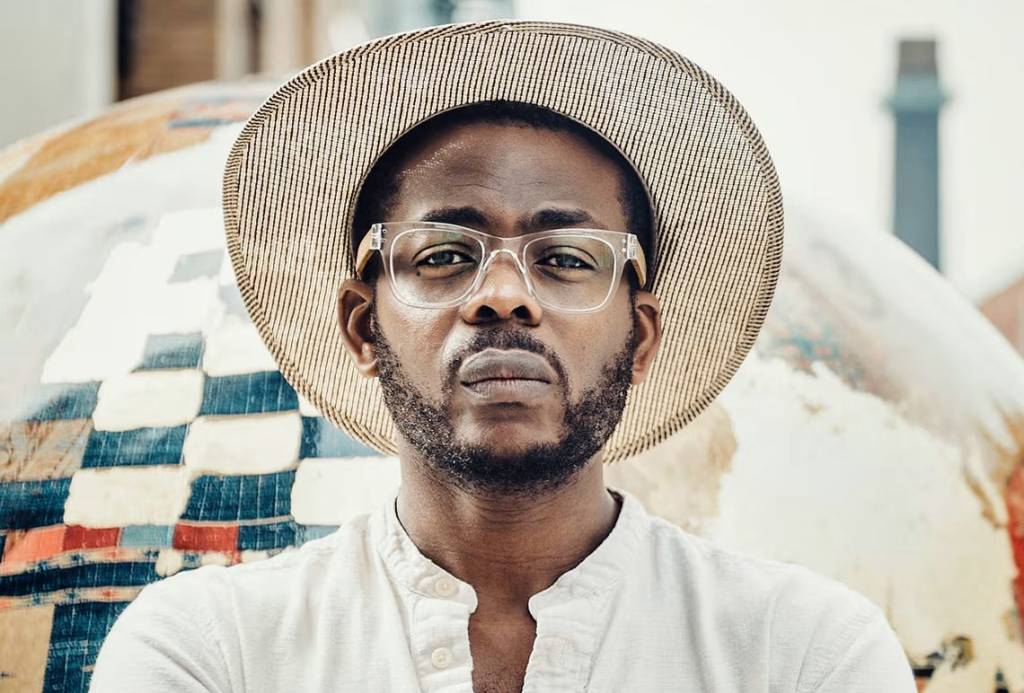
Àsìkò {Asiko} is a British-based Nigerian conceptual artist who shows his ideas through photography, mixed media and film. His work is created in the narrative and explores a line between fantasy and reality as a response to his experiences of identity, culture and heritage.
He was born in London, England, in 1978, but he spent his productive years in Lagos, Nigeria and his teenage years in London. He currently makes works in London and Nigeria.
Each of his work series investigates the boundaries of femininity and masculinity, spirituality and beauty, our connection with nature, and understanding an understanding of self in this world. Àsìkò’s visual works show ornament and choreographed movement in atmospheric locations, symbolism and a certain specific charge. Àsìkò’s photographs show emotions and details of his past, analysing his roots as an African and his connection to the modern world.
When he was young, he started to explore women, their identity and culture, particularly African culture. Àsìkò’s Woman Code series draws inspiration from the African Adire symbols used to decorate textiles in South-West Nigeria. Decades ago, Adire was used as a form of communication between Yoruba women living in a patriarchal Nigerian society. The symbols became a form of communication and opposition among the Yoruba women. In his work, Àsìkò strives to restore the symbols to their most real origin by copying them from the fabric and putting it as decoration onto the women themselves. Àsìkò says, “In the work I strip away the symbols off the fabric onto female form highlighting its truest meaning and origin. It is an allegory of the woman wearing and expressing her subjugated voice and beliefs; it’s a symbolic expression of her true self and the wider community and language of women.”
Figure 1. Àsìkò, Woman Code, 2020.
In general, his work’s belief is “looking back to look forward” to know where Africans are from as a society and help build a future “shaped not by Westernization, but a grounding of cultural ideology and aesthetics.”
His mythological imagery and other projects, such as the 2020 series She is Adorned, use the concept of layering, with subjects adorned in layers of African beads and jewellery. He also uses digital rendering by layering the photographs with aspects of his cultural heritage, such as fabric and textures.
Asiko She is Adorned 2020
This mixture of different processes – traditional photography with AI – has “opened strong imaginative possibilities” for him. Some of those new possibilities include painting and sculptural work, he says. In 2022, he made a globe artwork for the World Re-imagined project, a British art history education project around the transatlantic slave trade in which over 100 globes were placed across the UK.
His work has been exhibited in the UK, Nigeria and the US, and he just launched his first set of NFTs with the Bridge Gallery, a fine art NFT photography gallery. The artist says he continues opening up for new works and experimentation.
Bibliography
- Akintobi, Lamide. “Westernization is not the answer: Artist Asiko explores Yoruba culture through mythology.” CNN Style, January 24, 2023, https://edition.cnn.com/style/article/asiko-ade-okelarin-artist-nigeria-spc-intl/index.html.
- Asiko. “About Asiko.” Accessed June 28, 2023, https://www.asiko.co.uk/about.
- House of African Art. “Asiko.” Accessed June 28, 2023, https://www.houseofafricanart.com/asiko.
- Pavillon 54. “Asiko.” Accessed June 28, 2023, https://pavillon54.com/artists/37-asiko/.
Rotimi Fani-Kayode
Rotimi Fani-Kayode was born in 1955 in Lagos, Nigeria. His father was a politician and chieftain of Ife, the established Yoruba capital. In 1966, due to the Nigerian Civil War, 11-year-old Fani-Kayode moved to Brighton, England with his family. He moved to the United States to study at Georgetown University and, afterwards, at the Pratt Institute, where he earned an MFA in 1983. Fani-Kayode then came back to England to pursue photography. He then helped to found the organisation Autograph: Association of Black Photographers.
Working during the height of the AIDS crisis and reacting to the homophobia of both Thatcherite England and his home country of Nigeria, Fani-Kayode created images that promoted queer black desire, which called attention to the politics of race and representation and explored concepts of artistic identity and difference. He wrote, “On three counts I am an outsider: in matters of sexuality; in terms of geographical and cultural dislocation; and in the sense of not having become the sort of respectably married professional my parents might have hoped for.”
The photographer mixed African and European iconography in his work as a way to examine the borderline status of Yoruba thought and analyse the unsettled position of the black body in the Western imaginary. In the photograph Adebiyi (ca. 1989), the subject carries a mask featuring the lines of Eshu, the magician god of Yoruba mythology.
Yet the mask is not traditional or “authentic” in form but a form converted into an ironic, teasing signifier of African “otherness” that devalues the Primitivist tropes of European modernism.
View this post on Instagram
In other photos, warnings of death, such as hooded figures, deal with direct eroticism. For example, Untitled (ca. 1988) takes on a dense, baroque sensibility, portraying two men draped in rich velvet fabric, sensuously clasping in dramatic chiaroscuro with their faces averted from the viewer. By capturing such moments of closeness and communion, Fani-Kayode offered queer sexuality as an act of healing, even as a personal and political survival tool.
Fani-Kayode has had solo exhibitions at Riverside Studios, London (1986); Harvard University’s Hutchins Center, Cambridge, Massachusetts (2009); Rivington Place, London (2011); Iziko South African National Gallery, Cape Town (2014); Tiwani Contemporary, London (2014); Syracuse University Art Galleries, New York (2016); and Hales Project Room, New York (2018). His work has been incorporated in group exhibitions at numerous venues, including South West Arts, Bristol (1985); Oval House Theatre, London (1987); and Camerawork, London (1989). It also was featured in the African Pavilion at the Venice Biennale (2003) and at ARS 11 (2011) at Kiasma Museum of Contemporary Art, Helsinki.
Like many artists who suffered from AIDS, he also addressed his illness directly in his work.
Fani-Kayode’s bright career lasted a mere six years and finished when he died of a heart attack on December 12, 1989, at age 34 in a London hospital while recovering from an AIDS-related illness.
Bibliography
- Guggenhem. “Rotmi Fani-Kayode.” Accessed August 25, 2023, https://www.guggenheim.org/artwork/artist/rotimi-fani-kayode.
- The Legacy Project. “Rotimi Fani-Kayode.” Accessed: August 25, 2023, https://legacyprojectchicago.org/person/rotimi-fani-kayode.
Marianne Olaleye
Marianne Olaleye is a Nigerian-born photographer who lives in London. Recently, she overwhelmed the British Journal of Photography with her portrait of Aisha Asher and gained a spot as one of this year’s Portrait of Britain winners. The Portrait of Britain, one of the largest contemporary portrait exhibitions in the United Kingdom, celebrates and reflects modern Britain’s rich diversity, collating over 13000 submissions and selecting 200 portraits on its shortlist. Marianne Olaleye was nominated for her explicit storytelling and expressions of human behaviour in 2018. The winning portraits appeared on JCDecaux screens throughout September, all around the United Kingdom. Appraising the entry of Marianne Olaleye, the organisers said: “She is a master who has also photographed men and everyday life on the streets. She believes that each person has a story to tell and so she aims to give them the centre stage while showcasing the universality and raw, natural beauty of women. This is while hoping that her images will play a role in improving media representations of beauty.”
Marianne expresses her kind of photography as simple and direct – a means of depicting people who show beauty not only in their physical appearance but also in their relationship with their environment. A frequent theme in her photography is the open nature of feminine beauty. Simplicity is at the core of her work. Each individual has a story; therefore, Marianne strives to give them centre stage while showcasing women’s universality and bare, natural beauty. She desires that her pictures will play a role in enhancing media representations of beauty.
She has high-end clients at home and abroad, such as the former vice-president of Nigeria, Atiku Abubakar, the Governor of Lagos state, Akinwunmi Ambode, Haakon, Crown Prince of Norway, for Aftenposten.
View this post on Instagram
Bibliography
- CDN. “Marianne Olaleye: London based Nigerian photographer selected as one of the Portrait of Britain 2018 winners.” Accessed June 25, 2023, https://cdn.scoopernews.com/static/half/detail/272/1359864.html?page_from=share&.
Christina Ebenezer
Christina Ebenezer was born in Lagos, Nigeria, Ebenezer. Later, she moved to London at the age of six and spent her productive years in South East London. Here, she first met friends and collaborators who noticed her interest in photography, ultimately transitioning from behind the post-production doors to behind the lens. Her early work centred on society and reflected the familiar world she sensed was dealing with undue misrepresentation in the media and culture.
She is one of London’s prominent appearing talents known for her warming portraiture and trademark hues. Her distinct eye catches beauty with an evident signature, a radiance that originates throughout her work and subjects. Her power to capture deep skin tones’ richness is unique and esteemed.
Ebenezer was identified as one of The British Fashion Council’s New Wave Creatives – 2021. Her work has been incorporated in ‘Home By Ronan McKenzie’s The Self Portrait Exhibition’ and ‘The New Black Vanguard: Photography Between Art and Fashion. Her editorial work has been featured in British Vogue, ELLE U.S. and The Sunday Times Style, amongst other notable names. Her clients also include Apple, Netflix, Farfetch and Paul Smith. Ebenezer was named one of Forbes 30 Under 30: Arts and Culture Leaders in 2022.
Her Publications and Clients Include British Vogue, ELLE U.S, Vanity Fair, The Guardian, ELLE U.K, The Sunday Times Style, 10 Magazine + 10 Men Magazine, GQ, Nataal Media, The British Fashion Council, Farfetch, Browns Fashion, MR PORTER, Paul Smith, Duro Olowu, Missoma, About You, Mercedes Benz, Apple / Apple Music, Netflix, Google, Getty Images, Selfridges & Co., Nike, Warner Music & More.
Looking through her works, one can notice beautiful and apparent features that focus on one person and, in a way, explore their identity. She adds modern themes and stylish elements to make her characters stand out. In this series, we can see a woman’s empowerment due to her trendy makeup and style. Therefore, the locations in all of the photos are urban and simple. Instead of photographing her in places that incorporate high societal status, she puts the character in everyday rural spots. It could allude to different things as the photos have no accurate meaning, and each individual can have various interpretations. It could suggest that a woman is powerful and always at her best despite the circumstances she encounters. Therefore, it indicates that she shouldn’t follow the rules of rural societies, but find her unique style and always stand out.
View this post on InstagramBibliography
Christina Ebenezer. “Bio.” Accessed September 1, 2023, http://www.christinaebenezer.com/about.
Lakin Ogunbanwo
Working at the intersection of fashion photography and classical portraiture, young Nigerian artist Lakin Ogunbanwo makes enigmatic portraits with an erotic and subversive undertone. His topics live defiantly in the frame, often hidden by shadow, drapery and foliage. His use of vibrant, flat colours and bold designs form a more minimalist tribute to the African studio photography popular in the 1960s and 1970s.5
Central to Ogunbanwo’s artistic investigation is his desire to document the culture of Lagos, expand the contemporary African visual archive, and portray self-represented African narratives. He documents the complexity of his culture using veiled portraiture and fashion as a cultural signifier and, in doing so, counteracts the West’s monolithic gaze on Africa.
Lakin Ogunbanwo was born in Lagos, Nigeria, in 1987.7 He studied Law in Nigeria and in the United Kingdom before moving into photography in 2012.
The artist himself says, “I’ve always been interested in the arts, and everything I have done has come naturally and organically. I’m a visual person. I remember watching Fashion TV and Madonna videos while innocently shooting my sisters and their friends. It was a hobby. Then, after studying international law and diplomacy, I got real and decided that photography was what I wanted to do.”
His first work started with him photographing headwear, “I began shooting traditional men’s headwear to preserve my culture and observe how it has trickled down to my generation in the way we mix them up with contemporary fashion. There are so many different hats, and each one is associated with a specific Nigerian tribe. The first instalment was mainly Yoruba hats. For the second, I incorporated many more tribes and found hats with different shapes, textures and fabrics. It’s a series I’m going to keep on doing. I’m excited to be showing the work at Red Hook Labs and hope that the audience engages with it beyond the fact that these are lovely African hats.”
His work has been featured in The New Yorker, New York Times, Vogue Italia, ID online, British GQ and Riposte Magazine, amongst others. His solo exhibitions include E wá wo mi (2019), We Must Not Be Looking (2017), and Are We Good Enough (2015) at WHATIFTHEWORLD, Cape Town. He was also authorised to show in the window displays of Galeries Lafayette, Paris, in the Africa Now exhibition (2017). His work forms part of the public collection of the National Gallery of Victoria, Australia and the Wedge Collection in Toronto, Canada. He has attended the MMCA Residency programmed by the National Museum of Modern and Contemporary Art, Korea. Recently, he was awarded a three-month residency in Amsterdam by the Thami Mnyele Foundation, which will take place in 2021.
View this post on InstagramBibliography
Gallery Studio. “Lakin Ogunbanwo.” Accessed September 1, 2023, https://lakinogunbanwo.com/INFO.
Nataal. “Lakin Ogunbanwo.” Accessed September 1, 2023, https://nataal.com/lakin-ogunbanwo.
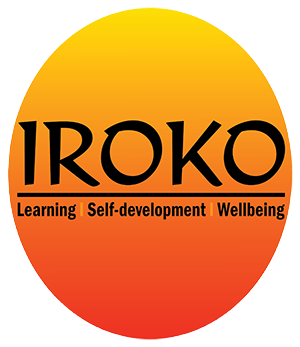
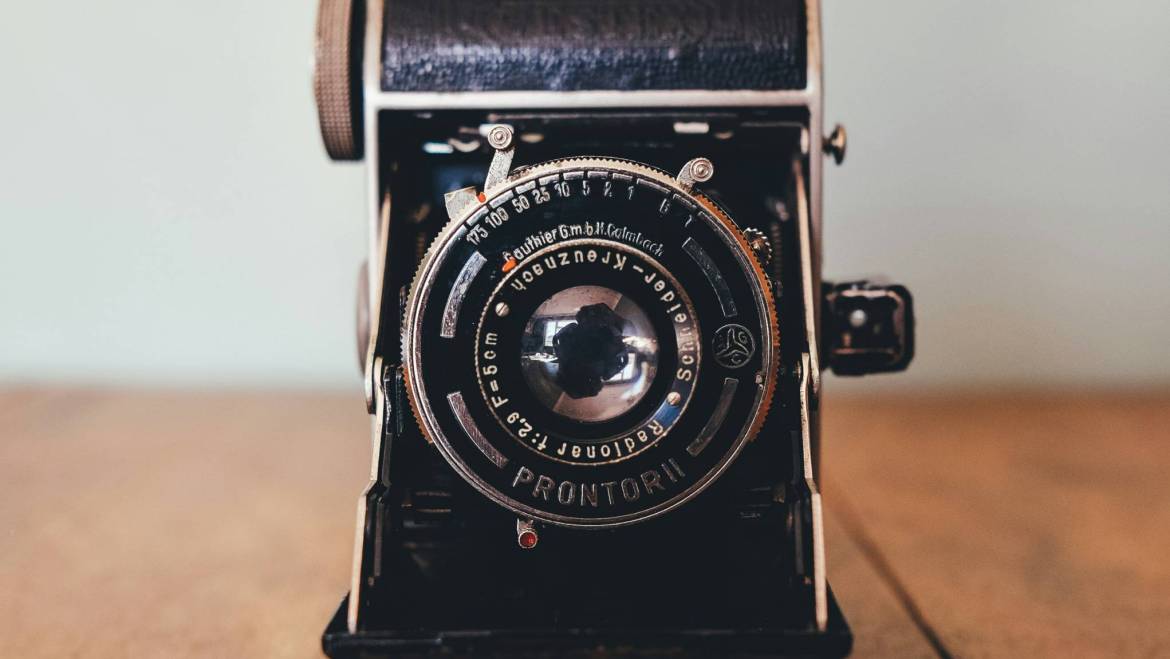
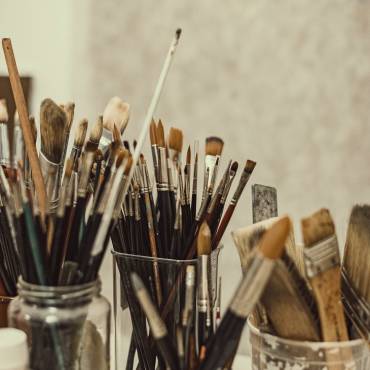
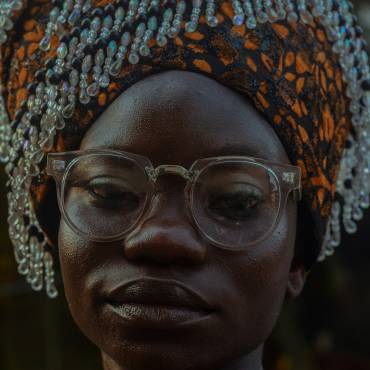
Add Comment